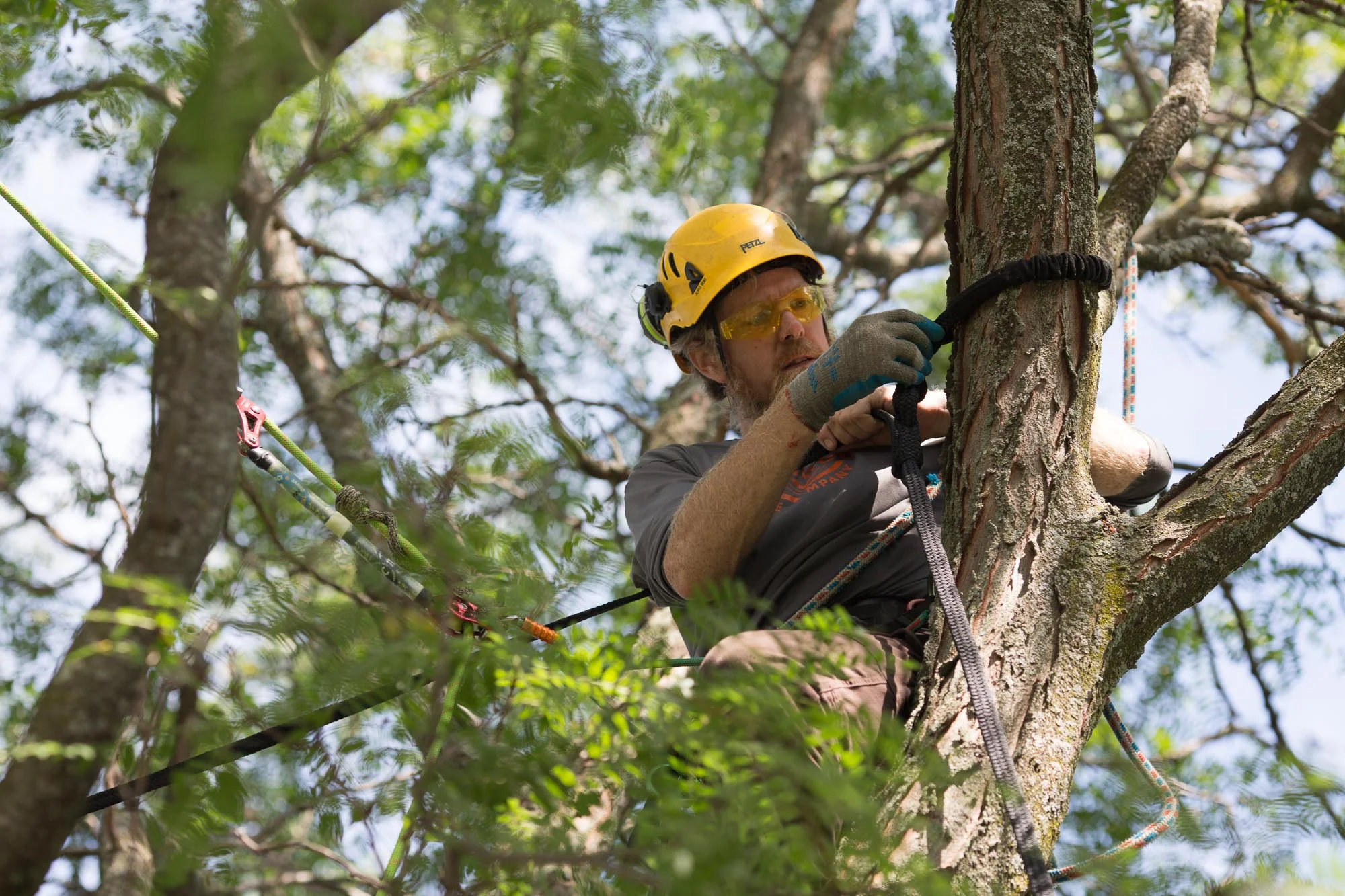Support Helps Trees Overcome Structural Deficiencies
Support systems are an important component in tree care when preservation of a viable tree with structural defects is desired. Most trees overcome structural deficiencies (cracks, wounds, weak unions....) organically, but some require extra support in order to assure safety to the tree and property owners.
3 Types of Tree Support Systems
Three types of tree support systems provide effective support to comprised trees in varying contexts:
1. Dynamic System
A dynamic system allows a tree to move in the wind without reaching its failure point.
We utilize dynamic cables (polyester ropes) to support weak unions not presently cracked open or found extremely low on the trunk of the tree. Unlike static support systems, dynamic systems are installed with a little bit of slack to allow the tree to move. Dynamic support systems help minimize the chances of a tree reaching a point during movement where a weak union will fail under load.
For larger trees, where we are supporting limbs or stems 10" or larger, we use a 3/4" hollow-braid polyester rope with a bark protection sleeve and a breaking strength of 10,200 lbs. On smaller limbs or trees, we use 1/2" hollow braid polyester rope with sleeve and a breaking strength of 5,200 lbs.
Both systems are very strong, but require inspections every two to three years. The life span of a dynamic system is around ten years; it should then be replaced with a new system.
Dynamic cabling support decreases the likelihood these twin trunks could crack under wind stress.
Rigid cabling supports larger branches in bigger trees.
2. Static System
A static system completely restricts tree movement. Static support systems are necessary when a tree has an open crack or potential failure point low on the trunk.
Heartwood installs taught static (steel) cables in the upper canopy to restrict movement of the two halves of a tree. The cable takes pressure off of the crack and distributes it more evenly throughout the tree. For large or mature trees, we use 3/8" extra high-strength steel cable with has a breaking strength of 15,400 lbs. In smaller ornamental trees, we use 3/16" cable with a breaking strength of 3990 lbs. Once installed these cables are a permanent fixture in your tree and must be inspected every 3-5 years to ensure proper function and safety.
Drilling a very long hole to install a brace system
3. Brace System
Brace systems involve placing threaded rods through an open crack to attempt to close the crack. A brace is typically utilized in conjunction with a static system to restrict the movement of the open crack.
Braces are used to close or secure open cracks in stems and branch unions. It is the least-used tree support method, but can really provide strong support when necessary. Installing a brace involves drilling a hole through the crack and placing a threaded rod in the hole. Washers and nuts are placed on each side of the threaded rod and the crack is forced shut by the pressure created by the nuts. Another rod is placed above the crack for added strength. In smaller trees, one rod is often sufficient to hold a cracked union when used in tandem with a static system in the upper canopy.
Pruning Recommended for All Cable Installations
In general, Heartwood recommends that all support systems be supplemented with tree pruning to reduce the stress placed on the systems and the tree itself. The combination of pruning and cabling gives the tree the best chance to survive extreme weather events, extra heavy seed loads, and large snow loads.




